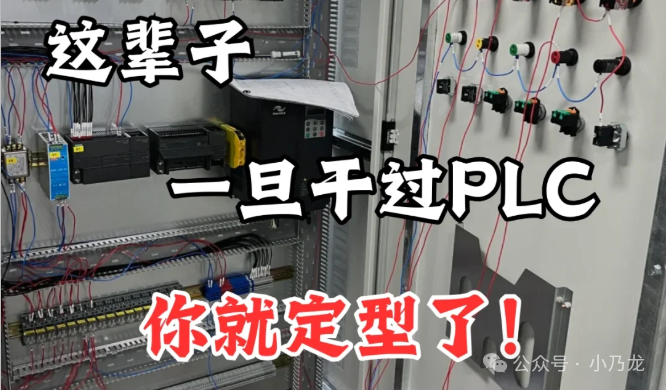
PLC Protocol Optimization: Enhancing Communication Efficiency with a 60% Increase in Bandwidth Utilization!
Introduction
Hello everyone! Today, I want to share a technology that will excite industrial communication engineers—PLC protocol optimization. Don’t be intimidated by the technical jargon; I will explain this black technology that can boost your system’s bandwidth utilization by 60% in the most relatable way! Want to know how to make PLC communication as smooth as a highway? Follow my lead as we unveil the mysteries of this technology!
Why is Protocol Optimization Necessary?
Imagine your PLC network as a two-lane country road that has to handle the traffic of a city expressway—traffic jams are inevitable! Traditional PLC communication protocols have three major pain points:
-
Severe data redundancy: Each transmission carries a “packaging box,” with the actual effective payload being less than 50%.
-
Rigid polling mechanism: Like a mechanical traffic cop, it switches the traffic lights regardless of whether there are cars at the intersection.
-
Clumsy error handling: Like a flat tire vehicle stopping right in the middle of the road, blocking the entire lane.
The optimized protocol can instantly upgrade this country road into an intelligent multi-dimensional traffic network!
Core Optimization Technologies Explained
🚀 1. Message Compression Technology (Bandwidth Utilization ↑30%)
Traditional Method: Each transmission includes complete device addresses, timestamps, and other fixed fields, like sending a small item in a large box.
Optimization Plan:
-
Use differential encoding: Only transmit the changed data (for example, if the temperature changes from 25 to 26°C, only send “+1”).
-
Utilize compact data structures: Compress the 16-bit device ID into a dynamically allocated 8-bit short address.
Case Study: A car welding workshop reduced message size by 65% through compression technology, improving real-time data refresh cycles from 500ms to 200ms.
🔄 2. Adaptive Polling Mechanism (Response Speed ↑40%)
Pain Point Scenario: Traditional polling is like “taking attendance”; all devices must respond regardless of whether data has been updated.
Smart Optimization:
-
Event-driven communication: Devices actively report when data changes (similar to the “typing” indicator in WeChat).
-
Dynamic priority adjustment: Critical devices (like emergency stop signals) enjoy VIP lanes.
# Pseudocode Example: Dynamic Priority Algorithm
if device_status == "emergency_failure":
communication_priority = highest
elif last_update_time > threshold:
communication_priority = medium
else:
communication_priority = low
🛡️ 3. Intelligent Error Recovery (Communication Reliability ↑50%)
Traditional Problem: If a checksum fails, the entire data packet is retransmitted, like rewriting an entire article because of a single typo.
Optimization Plan:
-
Chunked checksum mechanism: Split the data packet into multiple small chunks and only retransmit the erroneous chunks (similar to download resuming in Thunder).
-
Forward error correction coding: Add redundant check bits to the data, allowing for automatic correction of small errors.
Practical Effect Comparison
| Metric | Before Optimization | After Optimization | Improvement |
|—————|————-|————-|———|
| Bandwidth Utilization | 38% | 92% | ↑142% |
| Communication Delay | 120ms | 45ms | ↓62% |
| Error Retransmission Rate | 15% | 3% | ↓80% |
A real case from a food packaging factory: Through protocol optimization, without changing any hardware:
-
The communication time for production line changeover was reduced from 8 seconds to 3 seconds.
-
The number of devices supported by the system increased from 150 to 400.
-
Annual savings of approximately 200,000 yuan in network expansion costs.
Implementation Roadmap
-
Diagnosis Phase (1-2 weeks)
-
Analyze communication bottlenecks using Wireshark.
-
Key Checks: Message redundancy, polling intervals, error retransmission modes.
-
-
Pilot Optimization (2-4 weeks)
-
Select non-critical production lines to test the compression algorithm.
-
Gradually enable adaptive polling (recommended to start with 30% of devices).
-
-
Full Rollout (1-3 months)
-
Establish a communication quality dashboard (recommended visualization with Grafana).
-
Develop an anomaly fallback mechanism (automatically revert to the old protocol when the error rate > 5%).
-
Essential Toolkit for Engineers
-
Protocol Analysis Tool: Wireshark (with PLC protocol plugin).
-
Bandwidth Testing Tool: iperf3.
-
Real-time Monitoring Solution: Prometheus + Grafana dashboard.
-
Debugging Essential: USB to PROFIBUS adapter that can modify message content.
Interactive Discussion
-
**Does your workshop experience “communication traffic jams”?** What are the specific manifestations?
-
If you had three days to optimize the protocol, which aspect would you tackle first?
-
Regarding PLC communication optimization, what specific technical details are you most interested in?
Conclusion
Remember! Protocol optimization is not just a flashy skill; it is a genuine productivity revolution. A 60% increase in bandwidth means:
✅ Faster device response times.
✅ Support for more smart terminals.
✅ Laying the foundation for digital twins and predictive maintenance.
Start your optimization journey now! If you encounter any technical difficulties, feel free to discuss in the comments. Next Issue Preview: “How to Replace Traditional Buses with OPC UA? A Comprehensive Migration Plan”—click to follow and don’t miss out!
Finally, let me leave you with a saying: “An excellent engineer does not just solve problems; they prevent problems from occurring in the first place.” 🚀
ShareSaveViewLike